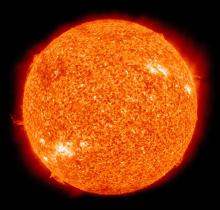Listen to today's episode of StarDate on the web the same day it airs in high-quality streaming audio without any extra ads or announcements. Choose a $8 one-month pass, or listen every day for a year for just $30.
You are here
RAS
On the evening of January 12th of 1820, 14 “gentleman astronomers” met over dinner at Freemason’s Tavern in London. By the time the last brandy was quaffed, they’d established a society for studying and promoting astronomy. Today, it’s one of the leading astronomy groups in the world: the Royal Astronomical Society.
It was founded as the Astronomical Society of London. It gained a royal charter from King William IV a few years later.
From the beginning, it held regular meetings to allow its members to keep up on the latest findings, and to share ideas. Today, the society holds an annual conference that’s one of the world’s largest astronomy meetings.
In 1827, it established its first journal — the “Monthly Notices.” It's still published today. And in the 1800s and early 1900s, it helped organize several expeditions to view solar eclipses.
The society’s roster of presidents is a who’s-who of international science over the last couple of centuries. It includes George Darwin, the brother of Charles Darwin; Arthur Eddington, one of the first astronomers to puzzle out what powers the stars; Bernard Lovell, who established the world’s first major radio astronomy observatory; and Jocelyn Bell Burnell, who discovered the spinning stellar corpses known as pulsars.
Today, the society has about 4,000 members, including many outside the U.K. It remains one of the world\'s leading scientific societies — two centuries after its founding.
Script by Damond Benningfield






